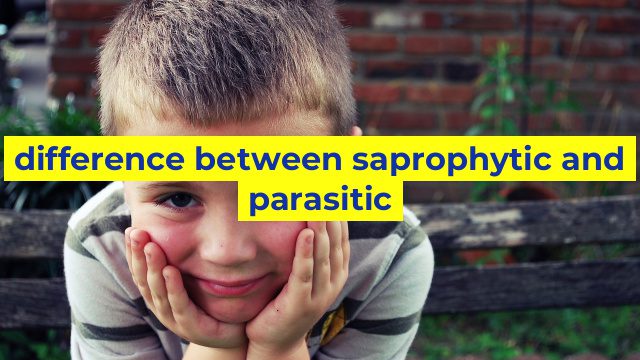Difference Between Saprophytic and Parasitic: Understanding the Two Forms of Nutrition
Introduction
The world of living beings is full of different forms of life and nutrition. Some living organisms rely on saprophytic nutrition, while others adopt parasitic nutrition. Both of these terms refer to different modes of nutrition that organisms acquire to survive. In this article, we will explore the key differences between saprophytic and parasitic nutrition.
Saprophytic Nutrition
Saprophytic nutrition is a method of nutrition in which an organism feeds on decaying organic matter. This organic matter can be dead plants or animals, or waste materials. Saprophytes play an important role in decomposing dead organic material and recycling nutrients back into the ecosystem. They are critical for maintaining a healthy environment, and they serve as a source of energy for other organisms. They are often referred to as the “recyclers” of the ecosystem.
Parasitic Nutrition
Parasitic nutrition is a method of nutrition in which an organism feeds on another living organism, known as the host. The parasite benefits from this relationship, while the host is often harmed. Parasites can infect plants, animals, and even humans. Some common examples of parasitic organisms include ticks, fleas, leeches, and tapeworms. Parasitic relationships can cause harm to the host organism that can lead to illness or even death.
Key Differences
There are several key differences between saprophytic and parasitic nutrition:
1. Source of food – Saprophytes feed on dead organic matter, while parasites feed on living organisms.
2. Impact on the host – Saprophytes do not harm the host organism, while parasites often harm or even kill their host.
3. Role in ecosystem – Saprophytes play a critical role in decomposing organic matter and recycling nutrients back into the ecosystem, while parasites have no role in the ecosystem other than causing harm.
Conclusion
In summary, saprophytic and parasitic nutrition are two different forms of nutrition found in living organisms. Saprophytes feed on dead organic matter, while parasites feed on living organisms. While saprophytes play a critical role in maintaining a healthy ecosystem, parasites often cause harm to their host. Understanding the differences between these two modes of nutrition is important for understanding the complexities of the natural world.
Table difference between saprophytic and parasitic
| Attribute | Saprophytic | Parasitic |
|---|---|---|
| Definition | Feeding on dead and decaying matter | Feeding on the living tissue of another organism, harming it in the process |
| Nutrition | Obtain nutrients from non-living organic matter | Obtain nutrients from host organism(s) |
| Mode of action | Break down organic materials through enzymatic action | Attach to host and feed on living cells, often causing harm |
| Relationship with host | No direct interaction with host, not harming it | Direct interaction with host, often causing harm or disease |
| Examples | Fungi, some bacteria | Tapeworms, ticks, fleas |


